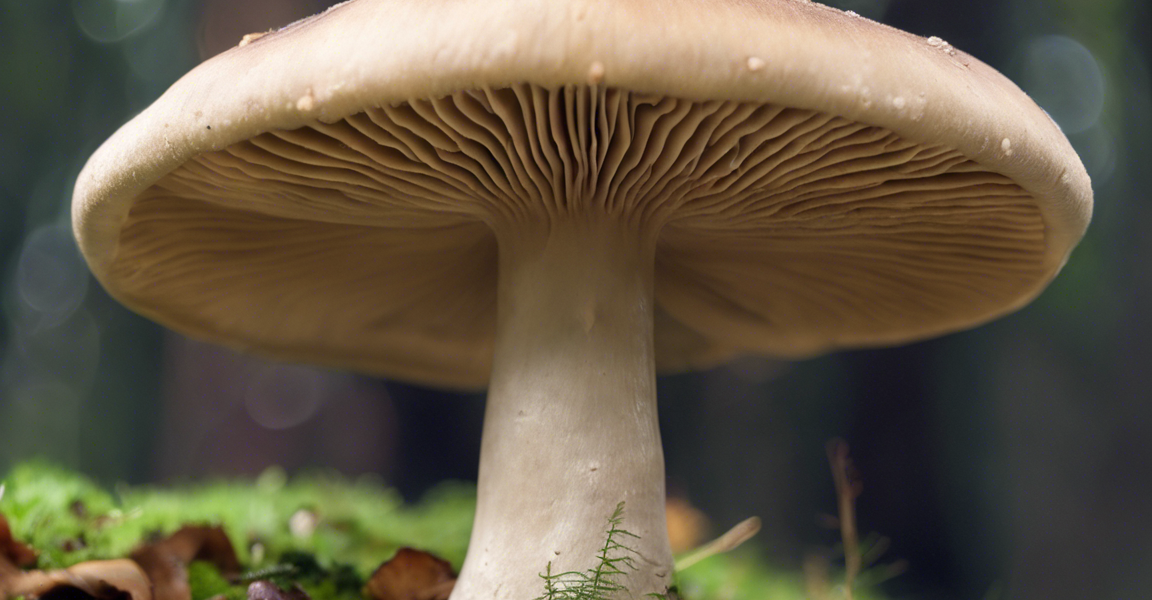The flying saucer mushroom, scientifically known as Pleuratus Pulmonarius, is a fascinating fungus that captivates the minds of nature enthusiasts and foragers alike. With its distinctive saucer-like shape and a variety of health benefits, these mushrooms have become a popular subject of study and admiration. In this comprehensive guide, we will delve into the mystical world of flying saucer mushrooms, exploring their origins, unique characteristics, culinary uses, medicinal properties, and much more.
Origins and Habitat
Flying saucer mushrooms are native to North America, Europe, and Asia, where they can be found growing on decaying hardwood trees, including oak, beech, and maple. These mushrooms thrive in moist, cool environments, often appearing in late summer to early fall. Their saucer-shaped caps, ranging in color from off-white to light brown, make them easily recognizable in the wild.
Unique Characteristics
One of the most striking features of flying saucer mushrooms is their distinctive shape, which resembles a flattened saucer or a wide-brimmed hat. The caps measure anywhere from 5 to 15 centimeters in diameter and are smooth and slightly sticky to the touch. Underneath the cap, the gills of the mushroom are white when young, eventually turning pink and then dark brown as they mature.
Culinary Uses
Flying saucer mushrooms have a mild, earthy flavor that pairs well with a variety of dishes. They can be sautéed, roasted, grilled, or added to soups and stews to impart a rich umami taste. When cooked, these mushrooms take on a meaty texture, making them a popular choice for vegetarian and vegan recipes. Additionally, flying saucer mushrooms can be dried and powdered to be used as a seasoning or flavor enhancer.
Medicinal Properties
Beyond their culinary applications, flying saucer mushrooms are also valued for their medicinal properties. Rich in nutrients such as vitamins B and D, as well as essential minerals like selenium and potassium, these mushrooms can help boost the immune system, improve bone health, and support overall well-being. Some studies suggest that flying saucer mushrooms may also possess anti-inflammatory and antioxidant effects, making them a valuable addition to a healthy diet.
Cultivation and Harvesting
While flying saucer mushrooms can be foraged in the wild, they are also cultivated by mushroom enthusiasts and commercial growers. To cultivate these mushrooms at home, a substrate of hardwood sawdust or straw can be inoculated with mushroom spawn and kept in a cool, humid environment. With proper care and attention, flying saucer mushrooms can be harvested within a few months, providing a fresh and sustainable source of food.
Risks and Precautions
It is important to note that while flying saucer mushrooms are generally safe to consume, there are some risks associated with wild foraging. Mistaking Pleuratus Pulmonarius for a toxic look-alike can lead to serious illness or even death. Therefore, it is essential to exercise caution and consult with a knowledgeable expert before consuming wild mushrooms. Additionally, individuals with allergies to fungi or compromised immune systems should avoid consuming flying saucer mushrooms altogether.
Recipes and Serving Suggestions
For those looking to incorporate flying saucer mushrooms into their culinary repertoire, the possibilities are endless. From creamy mushroom risotto to hearty mushroom and barley soup, these versatile fungi can elevate any dish with their unique flavor and texture. Sauteed flying saucer mushrooms with garlic and herbs make a delicious side dish, while grilled mushrooms can be served as a nutritious and flavorful topping for burgers and sandwiches.
Frequently Asked Questions (FAQs)
1. Are flying saucer mushrooms hallucinogenic?
Flying saucer mushrooms, like many other common edible mushrooms, are not hallucinogenic. They are safe to consume and do not contain any psychoactive compounds.
2. How can I distinguish flying saucer mushrooms from toxic look-alikes?
It is important to carefully study the characteristics of flying saucer mushrooms, including their saucer-like shape, white to light brown caps, and gills that turn pink and then dark brown with age. Consulting a field guide or expert can help you differentiate them from toxic species.
3. Can flying saucer mushrooms be used in dried form?
Yes, flying saucer mushrooms can be dried and powdered for use as a seasoning or flavoring agent in various dishes. Dried mushrooms have a more concentrated flavor and can be rehydrated before cooking.
4. Are there any specific health benefits associated with flying saucer mushrooms?
Flying saucer mushrooms are rich in essential nutrients and bioactive compounds that can support immune function, bone health, and overall well-being. Some studies suggest that these mushrooms may have anti-inflammatory and antioxidant properties.
5. How should flying saucer mushrooms be stored to prolong their freshness?
To maintain the freshness of flying saucer mushrooms, store them in a paper bag in the refrigerator. Avoid washing them until you are ready to use them, as excess moisture can cause the mushrooms to deteriorate more quickly.
In conclusion, the enigmatic world of flying saucer mushrooms offers a treasure trove of culinary delights and health benefits waiting to be explored. Whether foraged in the wild or cultivated at home, these mushrooms continue to inspire awe and fascination among nature lovers and food enthusiasts alike. By understanding their unique characteristics, culinary uses, and medicinal properties, we can unlock the full potential of these mystical fungi and savor their magic in every bite.



